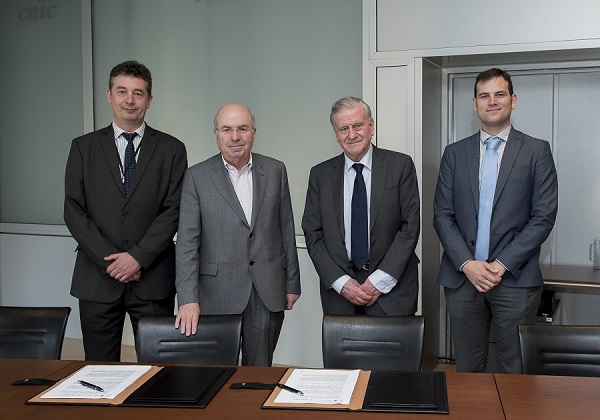Two of the of the largest research cohorts in Spain join together to work on the prevention of atherosclerosis and Alzheimer’s
Los resultados permitirán avanzar en el conocimiento de la interacción entre los diversos factores de riesgo de ambas enfermedades
The Carlos III National Center of Cardiovascular Research (CNIC) and the research center of the Pasqual Maragall Foundation, the Barcelonaβeta Brain Research Center(BBRC), have started a collaborative project in order to investigate the relationship between atherosclerosis disease and Alzheimer’s disease. The agreement includes studies of vascular image, cognitive image and neuroimaging in their respective cohorts, which add up to more than 6,000 healthy individuals, the largest initiative worldwide in this sense.
Alzheimer’s disease and atherosclerosis are characterized by presenting a long and slow progression, which starts much before the appearance of the first symptoms. In the case of Alzheimer, alterations in the brain can start being produced up to 20 years before the characteristic memory problems appear. And the same occurs with atherosclerosis, since it is known that the formation of plaques in the arteries also begins 20 years before a heart attack or stroke can take place.
Both Alzheimer and atherosclerosis share risk factors like obesity, hypertension, hypercholesterolemia, hyperglycemia and a sedentary lifestyle. In addition, it has been shown that cardiovascular risk factors cumulatively increase the risk of depositing the amyloid protein in the brain, which is also the main protein involved in Alzheimer’s disease. Nonetheless, it remains unknown whether both diseases share an underlying process.
Taking into account this data, the Director of the Pasqual Maragall Foundation, Dr. Jordi Camí, assures that “the experience accumulated by the BBRC and the CNIC gives us a unique opportunity to investigate and understand the relationship between Alzheimer and atherosclerosis”. For his part, the General Director of CNIC and principal researcher of the PESA-CNIC-SANTANDER study, Dr. Valentín Fuster, affirms that “we have spent years speculating with the idea that the risk of the development of cardiovascular disease is related to the risk of development of cognitive impairment and Alzheimer’s disease. Up until now they were hypothesis based on aggregated data, but this collaboration will help us decipher if there really is a real nexus between both these entities or even if both are different spectra of the same process.”
Cohorts to advance in prevention
The main advantage of the project is the richness of the multiple clinical data obtained in the participating cohorts: the Alfa (Alzheimer and Families) Study cohort of BBRC has 2,743 participants between the ages of 45 and 75, and the PESA-CNIC-SANTANDER (Progression of Early Subclinical Atherosclerosis) cohort of CNIC, with 4,184 participants between the ages of 40 and 55.
The volunteers that participate in the Alfa cohort, take cognitive, genetic, neuroimaging and clinical tests, as well as others, every 3 years, since 2012. The objective of this infrastructure, financed by “La Caixa” Social Work project, is to understand the natural history of the disease and to identify the risk factors and biological indicators that could contribute to its development. From now on, the participants will also get ultrasounds and CAT scans, in order to detect if they are in the pre-phase of atherosclerosis and to evaluate their evolution along with the risk of developing Alzheimer’s disease.
On the other hand, the participants of the PESA-CNIC-SANTANDER Study, are evaluated every 3 years using the latest non-invasive cardiovascular imaging techniques to detect the presence of atherosclerotic disease in the carotid, aortic, coronary and iliofemoral territories. Thanks to this agreement, the participants’ APOE gene will now be determined, which is the main genetic risk factor for Alzheimer’s disease, and a subgroup will perform cognitive tests and new neuroimaging techniques in order to investigate if cognitive deterioration is produced or brain changes in individuals with varying levels of atherosclerosis.
The data obtained in both cohorts will be analyzed by a multidisciplinary team from BBRC and CNIC. This exchange of material, ideas, results, personnel, and experience between both institutions will allow the advance of knowledge of the relationship between the vascular and cerebral changes that are produced in atherosclerosis and Alzheimer’s disease.











